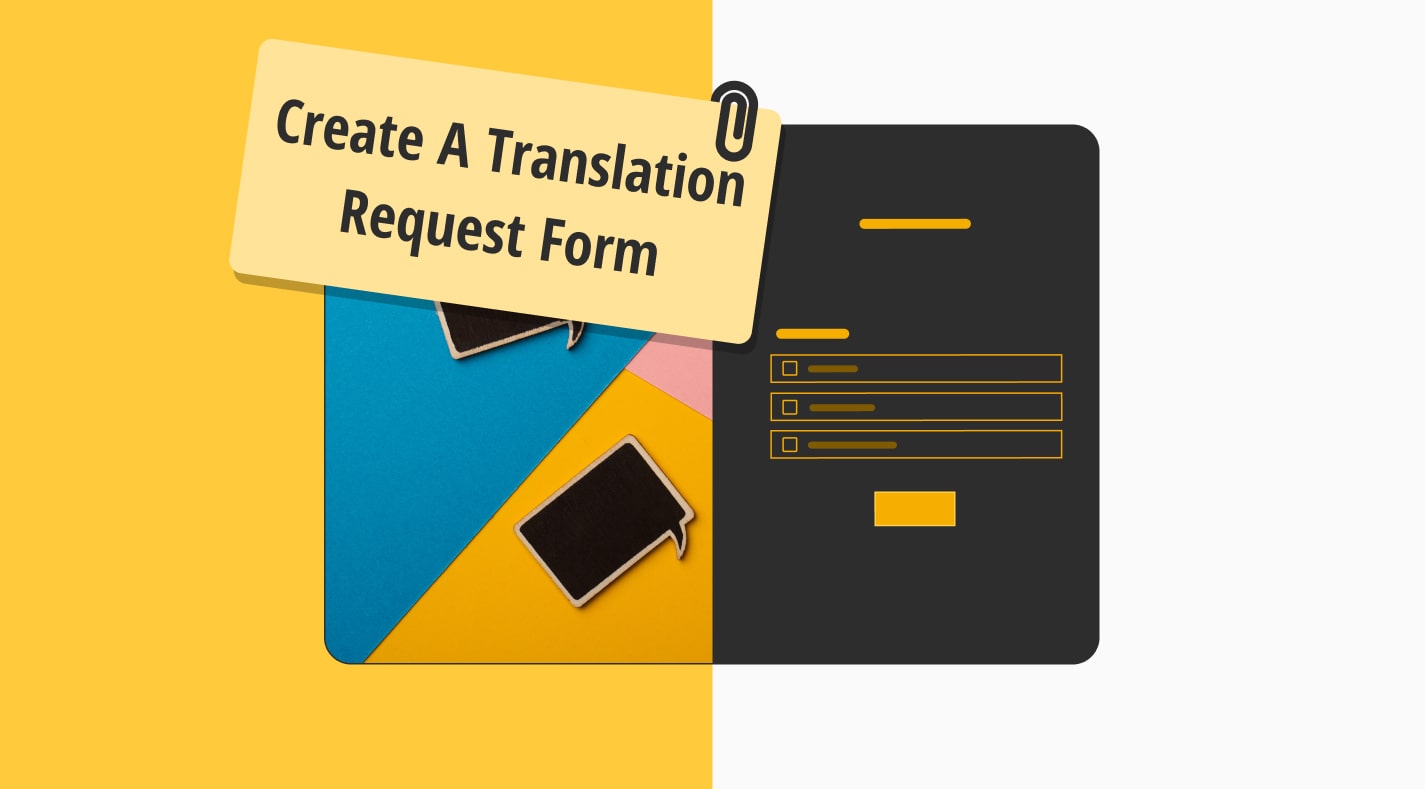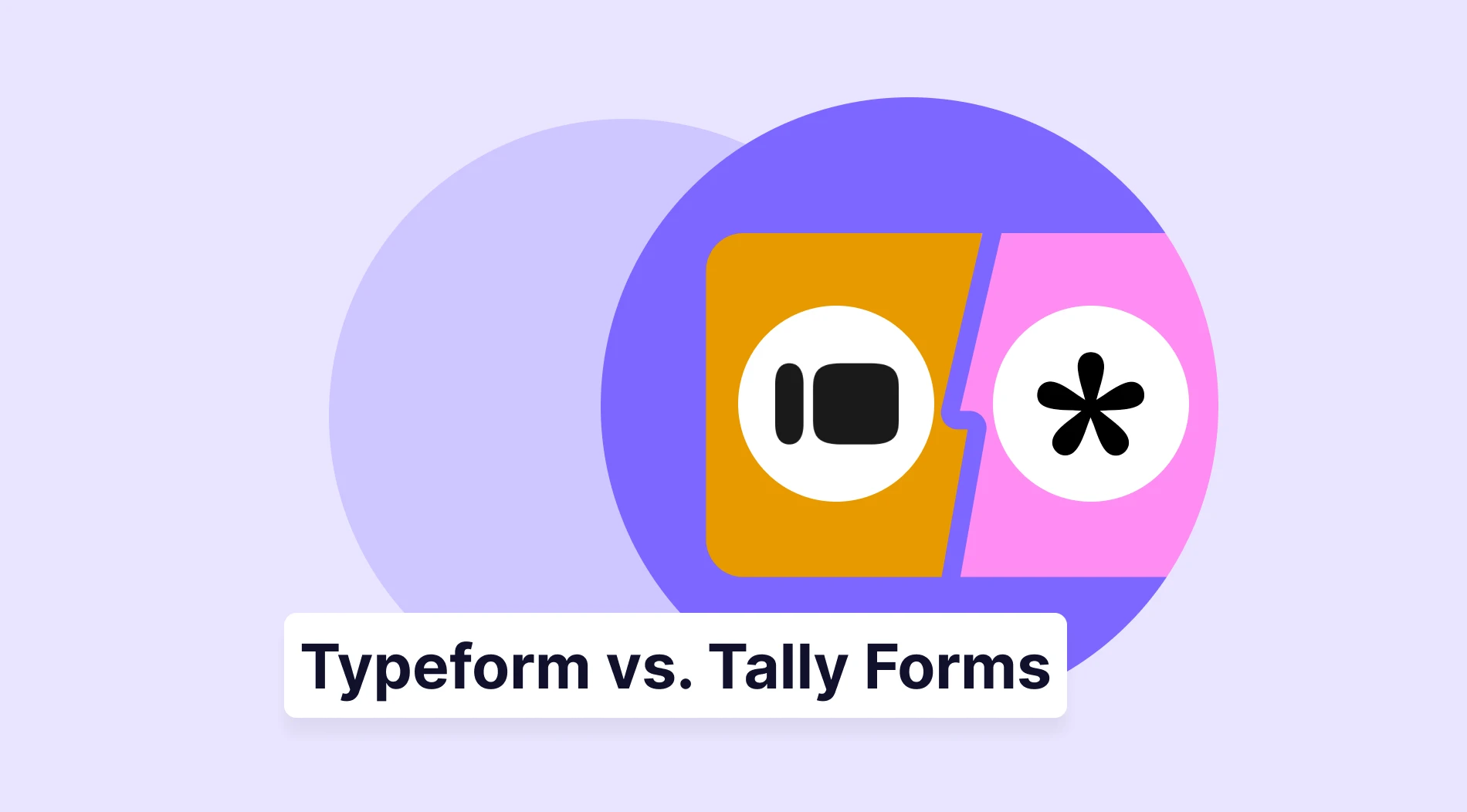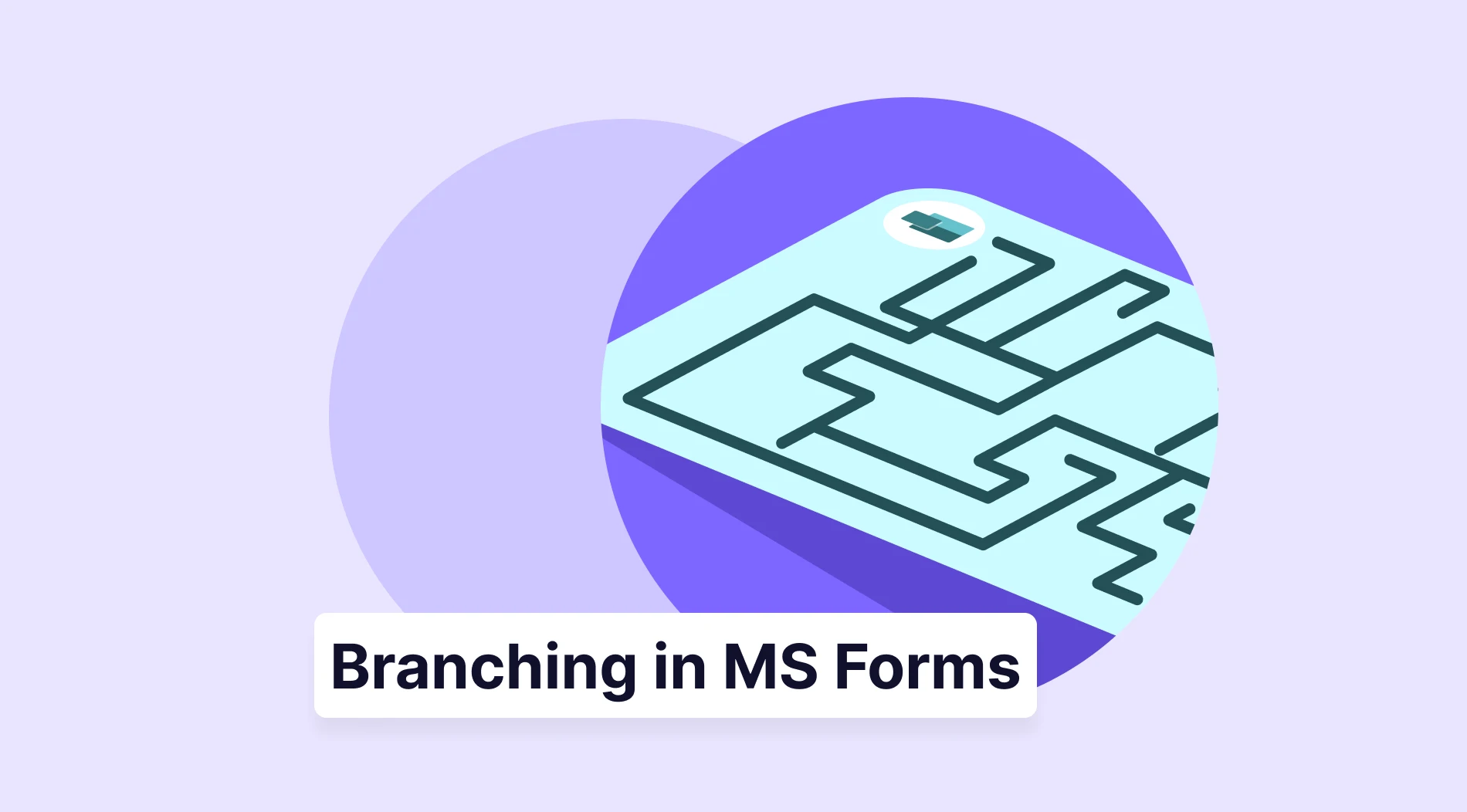Smooth and effective translation services are vital, especially in this age of global communication. Having a clear and well-organized translation request form can get you leads and collect the translation details beforehand.
This article will cover what a translation request form is, when to use it, and how to make one for your business. We will also look at the key components and tips for improving your forms to make your forms professional and appealing. Let’s start with a clear definition of what a translation request form is and how we can use it!
What is a translation request form?
A translation request form is a document that allows people to request a translation from one language to another. Creating a get-a-quote form helps both clients and providers ensure accuracy and clarity before and during the translation process.
When to use a translation request form?
A translation request form is helpful in different situations. If you have a translation office or provide translation services, having a form available can get you more customers. Here are some examples of cases in which you can use a translation request form.
1. If you want to get more leads on your website: Add a form on your website and get people who need translation services to send you their requests. This allows you to find more potential customers.
2. If you want to provide an easy way to reach you: Using a translation request form makes it easier to communicate with potential clients. By filling out the form, customers can quickly convey their specific needs.
3. If you want your leads to see an estimated price: Create a translation request form and ask for details of the translation project. This way, you can give your potential clients an idea of how much the project might cost.
4. If you offer a variety of translation services: If you offer different types of translation services, using a form helps clients to choose exactly what they need. With the help of the form, you can understand what service they want and give them the right information and assistance.
We can give more examples, but in short, you can use a translation request form when you want some details upfront and reach more customers for the translation jobs. It serves as a link between the client's requirements and the translation businesses.
How to make a translation request form in five steps
Now that you have seen some uses of the translation work request form, it is time to create one for your business. forms.app makes creating a translation request form simple by providing easy-to-use and powerful features. Using forms.app, you can create personalized translation request forms in five simple steps.
1. Log in or create a form.app account
The first step is to create forms.app account or login if you already have one. You can create your account in seconds. Creating an account takes a few seconds, especially if you use your Google, Apple, or Facebook accounts.
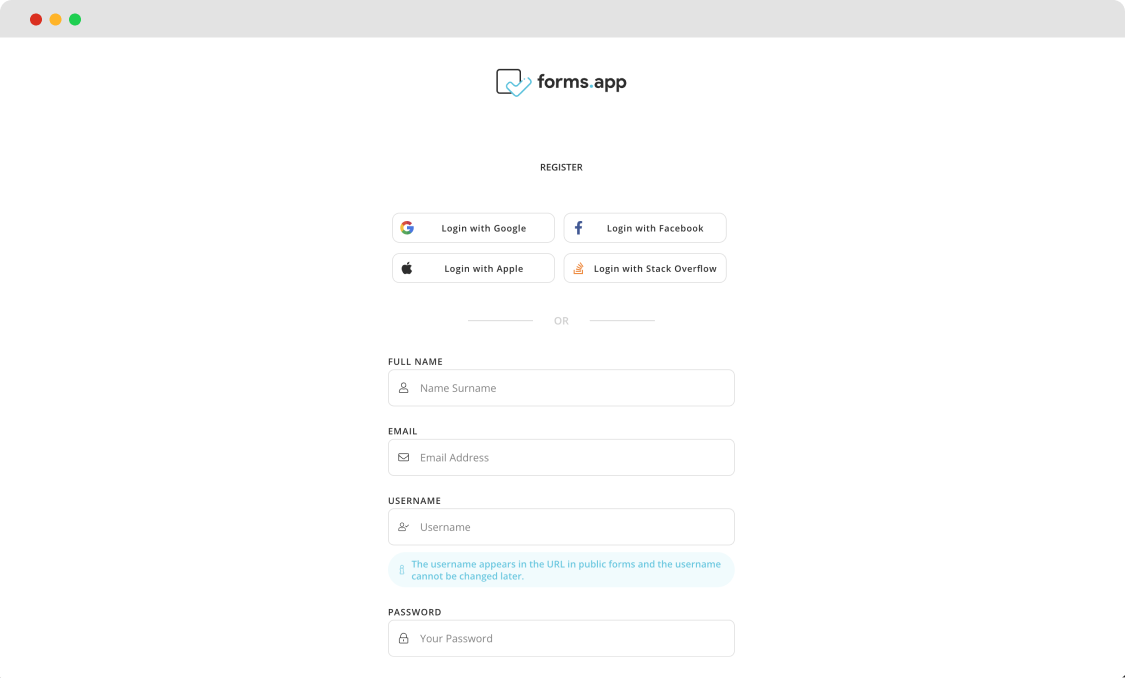
Creating a forms.app account
2. Generate with AI, choose a template, or start from scratch
After you log in, simply click the “Create Form” button. forms.app provides a few options to begin creating your translation request form. You can use forms.app AI to generate forms, select a pre-designed translation request form template, or start from scratch. Choose the option that best fits your interests and needs.
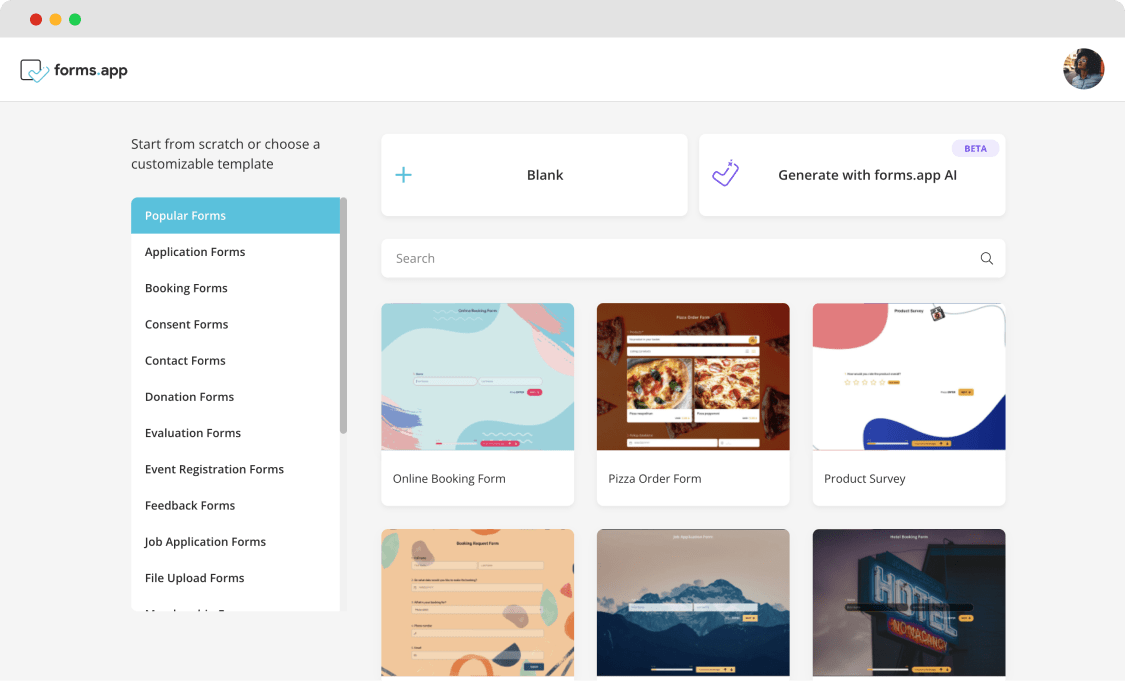
Choose a starting option for your translation request form
3. Add your translation request form questions
If you have used forms.app AI or started with a template, you can check and modify the questions. You can also add questions about translation details. Ensure that the questions capture all relevant details for a complete comprehension of your project. For example, you might ask the following details:
- Full name
- Contact information
- Deadline
- Project type
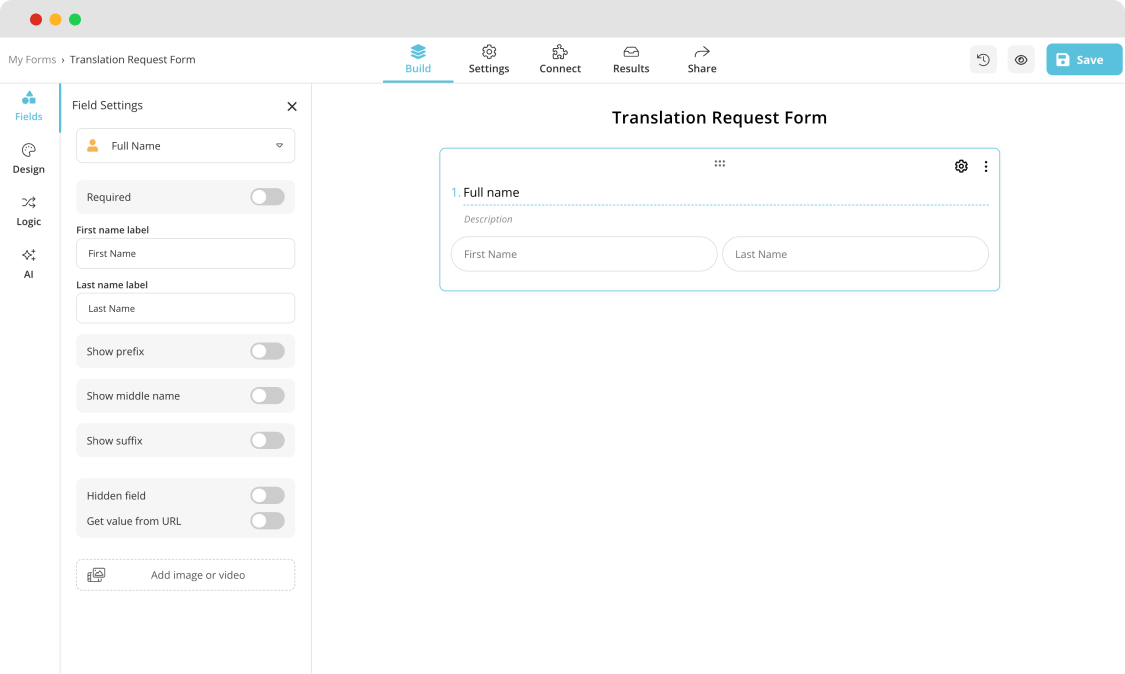
Add your translation request form questions
4. Customize your form design
Customize the appearance of your translation request form to impress your potential clients. forms.app allows you to change the colors, background, and fonts to create a branded and professional-looking form.
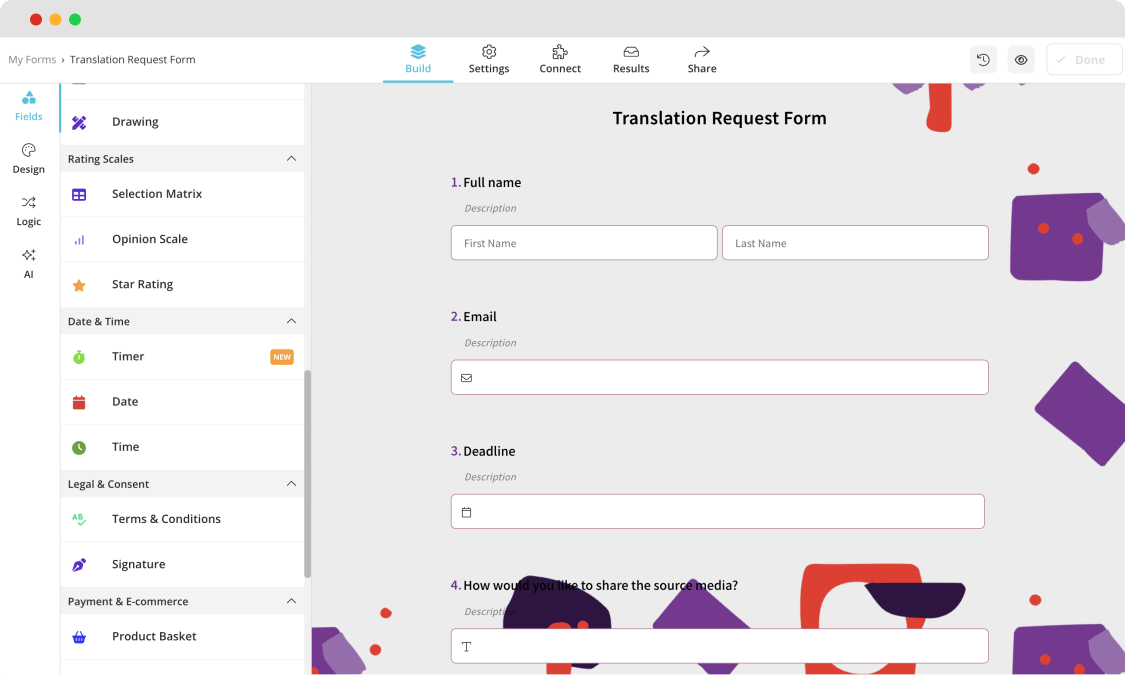
Changing the design of your translation request form
5. Share your translation request form
Once you've completed it, it's time to share your translation request form. forms.app offers several methods for sharing your document. You can embed it on your website, share a link, or use a QR code. You make it easy for your clients, partners, or translation service providers to access by sharing your form on many platforms.
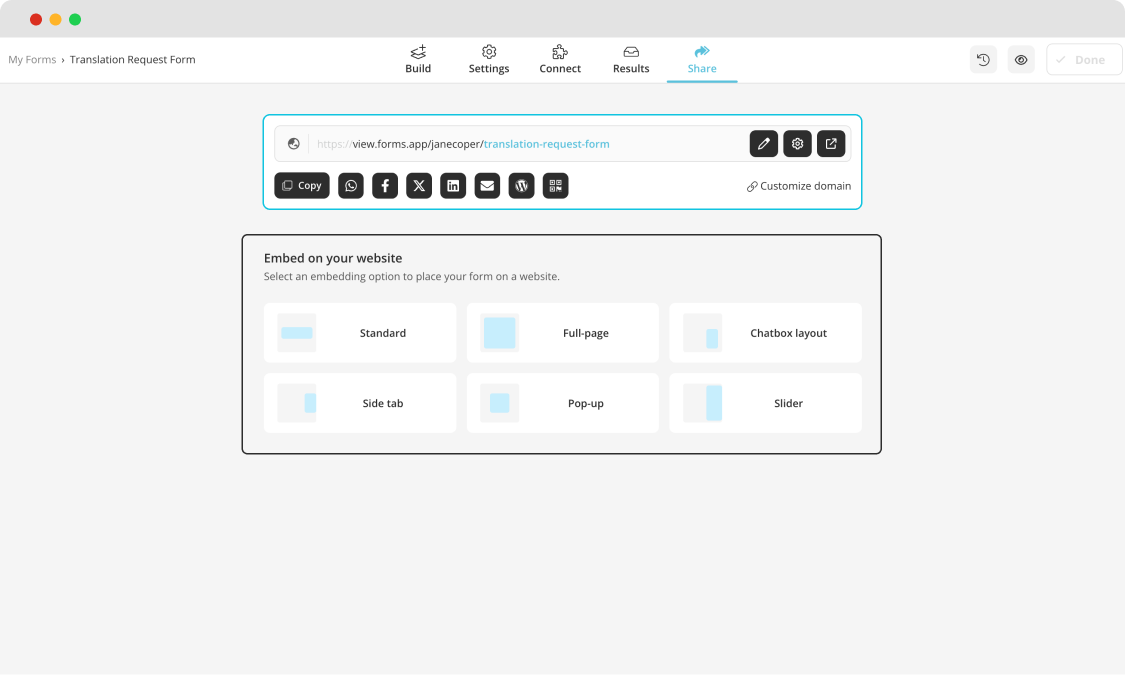
Choose a sharing option for your form
Four tips to create a better translation request form
You have seen step-by-step instructions on how to create a translation request form easily. But it also matters how your form looks. We have gathered four tips for you to create professional-looking forms that convert.
1. Add your logo to your form
Adding your company's logo to the translation request form gives a professional touch, and it increases brand recognition. This visual feature not only improves the form's aesthetic appeal but also develops trust with users.
2. Use the calculator feature
By using the calculator option, users can get a clear and straightforward idea of the pricing for translation services. This feature gives clients a quick estimate based on variables such as word count, language pairs, and additional benefits. It simplifies the pricing process and assists clients in understanding the financial consequences of their translation requests.
3. Provide clear instructions
Make your expectations and requirements clear through well-written and brief instructions. Specify the preferred format and give any special instructions that will help the translator with the content. This results in a more accurate translation.
4. Include the following contact information
Fill in the blanks with the requester's name, email address, and phone number. Throughout the translation process, this material is critical for communication.
Conclusion
In conclusion, creating a translation request form is an essential element for businesses offering translation services. Tips such as adding a logo, using the calculator feature, providing clear instructions, and including basic contact information increase the effectiveness of the form. It creates a positive experience for both customers and service providers.
This article showed you what a translation request form is and how to create one in a few simple steps. forms.app allows anyone to create successful forms for any purpose easily. Sign up now to create forms online and try it out right now.
forms.app, your free form builder
- Unlimited views
- Unlimited questions
- Unlimited notifications
